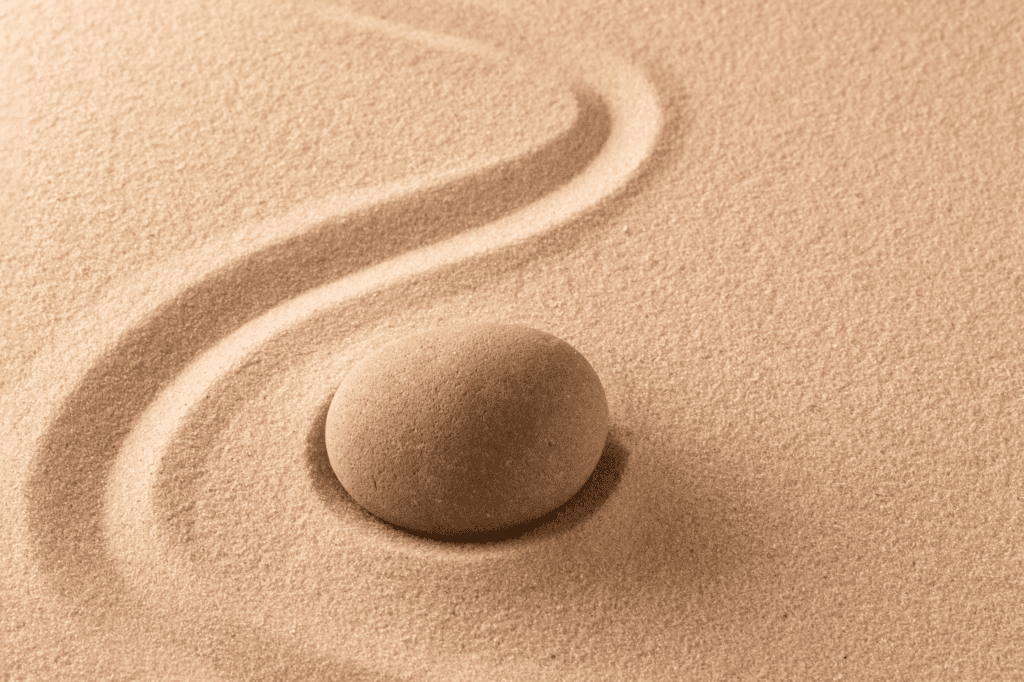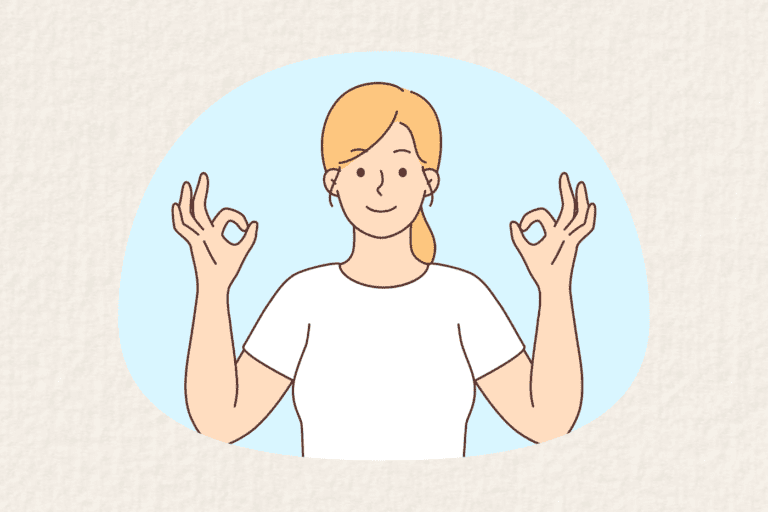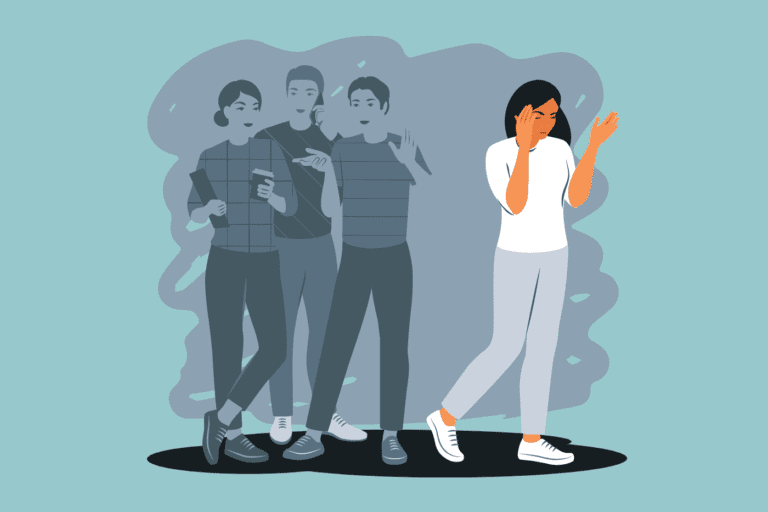Overwhelmed by life’s chaos? Stressed and busy? Wondering if mindfulness is practical? We have a solution for you!
Explore “7 Tested and Approved Mindfulness Exercises for Daily Life” to find simple practices for tranquility in your daily hustle.
Ready for a calmer you? Let’s dive in!
What is mindfulness?

Mindfulness is a state of intentional and non-judgmental awareness of the present moment.
It involves being fully present and engaged in the current experience, free from distraction or excessive worry about the past or future.
Sidenote
Incorporating mindfulness into your life aligns with the principles of slow living. Slow living encourages a deliberate focus on the present, fostering a deeper connection with each moment.
Discover practical tips for embracing slow living in your everyday life, especially if you’re a student or a busy individual here.
What Did Buddha Say About Mindfulness?
Buddha, a profound advocate of mindfulness, shared timeless wisdom that resonates with the essence of being present:
- “Happiness will never come to those who fail to appreciate what they already have.”
- This quote underscores the importance of gratitude, a key aspect of mindfulness.
- Being mindful involves appreciating and savoring the present, and acknowledging the richness of the current moment.
- “Before you speak, let your words pass through three gates: Is it true? Is it necessary? Is it kind?”
- Mindfulness involves thoughtful communication, considering the truth, necessity, and kindness in our words before expressing them.
- “Pain is inevitable. Suffering is optional.”
- This quote delves into the concept of acceptance in mindfulness. Pain is a part of life, but suffering is influenced by our reactions.
- Mindfulness encourages acknowledging pain without unnecessary resistance, leading to a more peaceful state of mind.
For those interested in delving deeper into the philosophy behind mindfulness, explore the teachings of Buddha here. This link will take you to another website for a more in-depth exploration.
What is a Real-life Example of Mindfulness?
A real-life example of mindfulness is savoring a meal. Instead of rushing through eating, a mindful approach involves fully engaging your senses in the experience.
You feel each bite, appreciate the flavors, textures, and aromas, and remain fully present without being preoccupied with other thoughts.
How can I practice mindfulness in my daily life? 7 Simple Mindfulness Exercises

1. Morning Meditation
Start your day with a few minutes of meditation. Find a quiet space, sit comfortably, and focus on your breath.
Let go of thoughts and gently bring your attention back to the breath. Gradually extend the duration as you become more comfortable.
How to Meditate for Beginners
- Find Your Sanctuary: Choose a quiet space where you won’t be disturbed. It could be a corner of your room or a peaceful outdoor spot.
- Comfortable Seating: Sit comfortably, either on a chair or cushion. Keep your back straight to allow for easy breathing.
- Focus on Your Breath: Close your eyes and bring attention to your breath. Inhale deeply through your nose, feeling your chest and abdomen expand. Exhale slowly through your mouth.
- Let Go of Thoughts: As you meditate, thoughts may arise. Instead of engaging with them, gently let them go. Bring your focus back to your breath.
- Gradual Duration Increase: If you’re new to meditation, start with 5 minutes and gradually extend as you become more at ease with the practice. Set a timer to avoid distraction.
Benefits of Meditation
- Stress Reduction: Meditation is a proven stress-reliever, promoting a sense of calm and reducing the impact of daily stressors.
- Improved Focus: Regular meditation enhances concentration and cognitive function, helping you stay focused throughout the day.
- Emotional Well-being: It fosters emotional resilience, providing a mental sanctuary to process and manage emotions effectively.
- Enhanced Self-awareness: Meditation cultivates self-awareness, allowing you to understand your thoughts and emotions without judgment.
- Better Sleep: A consistent meditation practice contributes to improved sleep quality, aiding in relaxation and promoting a restful night.
2. Bedtime Visualization
Before sleep, visualize positive scenarios or outcomes. Imagine a peaceful place or replay moments of joy.
This practice not only enhances relaxation but also cultivates a positive mindset.
How to Practice Bedtime Visualization
- Create a Relaxing Environment: Dim the lights, eliminate distractions, and ensure your bedroom is conducive to relaxation.
- Comfortable Position: Lie down comfortably on your back. Close your eyes and take a few deep breaths to settle into a relaxed state.
- Positive Imagery: Visualize positive scenarios or outcomes. Imagine a serene place—a peaceful beach, a tranquil forest, or any location that brings you joy.
- Engage the Senses: Incorporate sensory details into your visualization. Feel the warmth of the sun, hear the gentle sounds of nature, and immerse yourself in the sensory richness of your imagined space.
- Moments of Joy: Replay moments of joy and happiness from your day or cherished memories. Bring these moments to life in your mind, savoring the positive emotions associated with them.
Revision Technique: Transforming Memories for Positivity
- Identify the Memory: Choose a memory that brings discomfort or negativity.
- Reimagine the Scene: As you lie in bed, mentally revisit the memory. However, this time, rewrite the script. Change the narrative, introducing positive elements or altering the outcome in a way that brings peace.
- Anchor with Positivity: After revising the memory, anchor yourself in a positive image or affirmation. This helps shift your emotional state before sleep.
Benefits of Bedtime Visualization
- Enhanced Relaxation: Visualization calms the mind, easing tension and stress accumulated during the day.
- Positive Mindset: Cultivating positive images fosters an optimistic mindset, promoting overall well-being.
- Improved Sleep Quality: Visualization prepares your mind for rest, contributing to a more restful and rejuvenating sleep.
3. Gratitude Walk
Take a stroll and express gratitude with each step. Repeat affirmations that reflect appreciation for what you have.
This simple walk becomes a mindful journey, fostering a sense of contentment.
10 gratitude affirmations you can incorporate into your walk
- “I am grateful for the gift of a new day and the opportunities it brings.”
- “With each step, I appreciate the strength and health of my body.”
- “Nature surrounds me with beauty, and I am thankful for its wonders.”
- “I express gratitude for the love and support in my life.”
- “My challenges are opportunities for growth, and I am grateful for the lessons they bring.”
- “Every breath I take is a reminder of the precious gift of life.”
- “I am thankful for the abundance of positive experiences and memories.”
- “Gratitude fills my heart, and I radiate positivity to those around me.”
- “The present moment is a gift, and I am grateful for its infinite possibilities.”
- “I appreciate the simple joys of life and find contentment in the present.”
As you repeat these affirmations during your gratitude walk, let each step reinforce a sense of appreciation and contentment, transforming your stroll into a mindful journey of gratitude.
4. Colorful Nourishing Food
Prepare and enjoy a vibrant, nourishing meal. Focus on the colors, textures, and flavors.
This practice not only promotes mindful eating but also nourishes your body with wholesome goodness.
7 vibrant and nourishing food examples
- Rainbow Salad: Combine a variety of colorful vegetables such as cherry tomatoes, bell peppers, carrots, and cucumbers for a visually stunning salad.
- Dragon Fruit Smoothie Bowl: Blend dragon fruit with other vibrant fruits like berries and mango for a refreshing and visually striking smoothie bowl.
- Quinoa and Veggie Stir-Fry: Stir-fry a mix of vegetables like broccoli, bell peppers, and snap peas with quinoa for a colorful and nutritious meal.
- Sweet Potato and Kale Buddha Bowl: Roast sweet potatoes, sauté kale, and add other colorful veggies for a nourishing Buddha bowl.
- Mango Avocado Salsa: Combine diced mango, avocado, red onion, and cilantro for a delicious and colorful salsa to pair with grilled chicken or fish.
- Caprese Salad: Layer sliced tomatoes, fresh mozzarella, and basil leaves, drizzling with balsamic glaze for a classic and colorful Caprese salad.
- Beetroot Hummus: Incorporate beets into your hummus for a vibrant and nutrient-rich dip to enjoy with whole-grain crackers or veggie sticks.
Each of these dishes not only brings a burst of colors to your plate but also provides a diverse range of nutrients, contributing to a wholesome and visually delightful dining experience.
5. Stop and Be Still
Dedicate 30 minutes to stillness. Disconnect from devices, find a quiet spot, and simply be. Observe your thoughts without judgment. This practice builds mental clarity and reduces stress.
Overcoming Challenges
- Initial Difficulty: At first, being still might feel challenging. It’s common to experience restlessness or the urge to reach for distractions.
- Building Willpower: As you persist, you’ll notice it gradually becomes easier. This practice is a form of willpower training, teaching you to resist the impulse to constantly engage with external stimuli.
Benefits Beyond Stillness
- Mental Clarity: Regular stillness enhances mental clarity, helping you approach challenges with a focused and calm mind.
- Stress Reduction: The practice provides a respite from the demands of daily life, reducing stress and promoting overall well-being.
Why It Matters in Daily Life
This exercise extends beyond the dedicated 30 minutes. The ability to be still and focused is a valuable skill that can positively impact various aspects of life, from work settings to personal relationships.
6. Soothing Self-Massage
Treat yourself to a self-massage using nourishing oil. Focus on each body part, promoting relaxation and mindfulness. This practice enhances body awareness and self-care.
Guide to a Nourishing Self-Massage
- Head and Scalp:
- Apply gentle pressure with your fingertips in circular motions on your scalp. Move your fingers from the forehead to the back of your head, promoting relaxation.
- Face and Jaw:
- Use upward strokes on your face, paying attention to your jawline and cheekbones. Release tension by gently massaging your temples in circular motions.
- Neck and Shoulders:
- Apply a small amount of nourishing oil on your neck and shoulders. Use kneading motions to release tension. Focus on areas where you feel tightness.
- Arms and Hands:
- Massage your arms and hands, starting from the shoulders and working your way down to the fingertips. Pay extra attention to areas that may carry tension.
- Back:
- If possible, use a massage tool or reach areas you can comfortably access. Apply gentle pressure and long strokes along your spine to soothe your back muscles.
- Legs and Feet:
- Finish by massaging your legs and feet. Work your way from the thighs down to the ankles and feet. Use circular motions on your soles for a relaxing finish.
Tips for a Relaxing Experience
- Create a Calm Environment: Dim the lights, play soft music, or light a scented candle to enhance the soothing ambiance.
- Mindful Breathing: Pair each massage movement with deep, mindful breaths. Inhale positive energy, and exhale tension.
- Choose Nourishing Oil: Opt for a nourishing oil like coconut or almond oil. The scent and texture add to the overall sensory experience.
Enhancing Body Awareness and Self-Care
Soothing self-massage is not just about physical relaxation; it’s a journey of self-awareness and care. By mindfully addressing each body part, you cultivate a deeper connection with yourself, promoting overall well-being.
7. Journaling
Journal your goals in the present tense as if they are already happening. This technique reinforces positive thinking, aligning your actions with your aspirations. Read them daily for motivation.
Journaling Your Goals: 10 Inspiring Prompts
- Career Achievement:
- “I am thriving in my dream career as a [your profession].”
- Personal Growth:
- “Every day, I am becoming a better version of myself by [your personal growth focus].”
- Health and Well-being:
- “My body is strong, vibrant, and full of energy. I nurture it with [healthy habits].”
- Financial Abundance:
- “I am attracting financial abundance into my life. Money flows to me effortlessly, allowing me to [financial goals].”
- Relationships:
- “My relationships are filled with love, understanding, and joy. I nurture connections with [important people in your life].”
- Creativity and Passion:
- “Creativity flows through me, and I express my passions freely. I am engaged in [creative pursuits].”
- Gratitude Focus:
- “I am grateful for the abundance in my life, including [specific things you are grateful for].”
- Mindfulness and Presence:
- “I embrace the present moment, finding joy and peace in [mindful practices].”
- Travel and Adventure:
- “I am exploring new places and experiencing exciting adventures. My life is filled with [travel goals].”
- Inner Harmony:
- “I am at peace with who I am, radiating positivity and kindness to myself and others.”
Using Your Journal for Daily Motivation
- Read Daily: Make it a habit to read your affirmations daily, reinforcing a positive mindset.
- Reflect and Adjust: Periodically reflect on your goals, adjusting and adding new affirmations as your aspirations evolve.
- Celebrate Achievements: Acknowledge and celebrate small victories along your journey, fostering motivation and gratitude.
Journaling your goals in the present tense not only sets a positive tone for your day but also serves as a powerful tool to align your actions with your aspirations.
Tips to Overcome Obstacles
- Start Small: Begin with a few minutes and gradually increase the duration.
- Consistency is Key: Make these practices a regular part of your routine.
- Mindful Reminders: Set reminders on your phone or place visual cues to prompt mindfulness.
By incorporating these simple practices, you infuse mindfulness into your daily life, fostering a deeper connection with the present and nurturing your overall well-being.
Where do I start with mindfulness?

1. Understanding Mindfulness
- What is Mindfulness? Mindfulness is the practice of being fully present and engaged in the current moment without judgment. It involves cultivating awareness of your thoughts, feelings, and surroundings.
2. Start with Breath Awareness
- How to Practice Breath Awareness:
- Find a quiet space to sit or lie down.
- Focus on your breath, paying attention to each inhale and exhale.
- Notice the sensation of breath in your nostrils or the rise and fall of your chest.
3. Mindful Observation
- How to Practice Mindful Observation:
- Choose an object, such as a flower or a piece of fruit.
- Observe it without judgment, noticing its colors, textures, and details.
- Engage your senses fully in the observation.
4. Body Scan Meditation
- How to Practice Body Scan Meditation:
- Lie down comfortably and close your eyes.
- Bring attention to different parts of your body, starting from your toes to the top of your head.
- Notice any sensations without trying to change them.
5. Walking Meditation
- How to Practice Walking Meditation:
- Take a slow, deliberate walk.
- Pay attention to the sensations of each step, the movement of your body, and the contact with the ground.
- Be fully present in the act of walking.
6. Incorporate Mindful Moments
- Examples of Mindful Moments:
- Mindful Eating: savor each bite, notice flavors and textures.
- Mindful Listening: fully focus on the sounds around you without labeling or judging them.
7. Gradual Progress
- Start Small: Begin with a few minutes of practice daily and gradually extend the duration as you become more comfortable.
8. Mindfulness Apps and Resources
- Explore Apps: Consider using mindfulness apps like Headspace or Calm for guided sessions.
- Read Books: Explore books on mindfulness for a deeper understanding of the practice.
9. Cultivate Patience
- Be Gentle with Yourself: Mindfulness is a skill that develops over time. Embrace the process and allow yourself to grow gradually.
10. Consistency is Key
- Make it a Routine: Incorporate mindfulness into your daily routine. Consistency enhances its effectiveness.
Remember, mindfulness is a journey, not a destination. Start with small steps, be patient, and enjoy the present moment.
Conclusion
Congratulations on completing your journey through “7 Tested and Approved Mindfulness Exercises for Daily Life.” As you integrate these simple yet powerful practices into your routine, may you find moments of peace amidst life’s hustle!
Remember, mindfulness is not a destination but a continual journey. By weaving these exercises into your daily fabric, you’ve taken a step toward a more centered and balanced life.
Stay present, be kind to yourself, and savor the tranquility you’ve cultivated. The power to transform your daily experiences lies within you.








